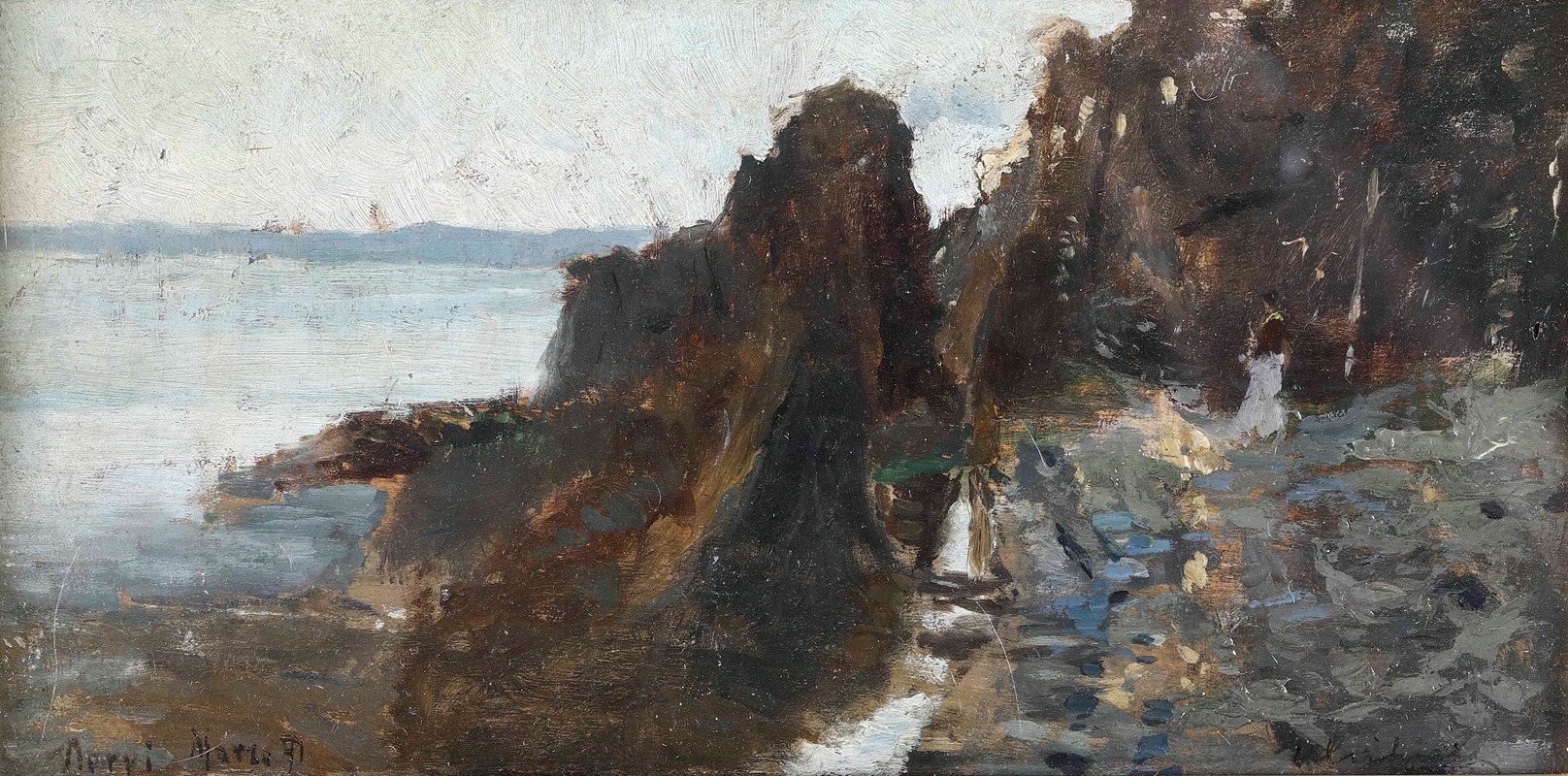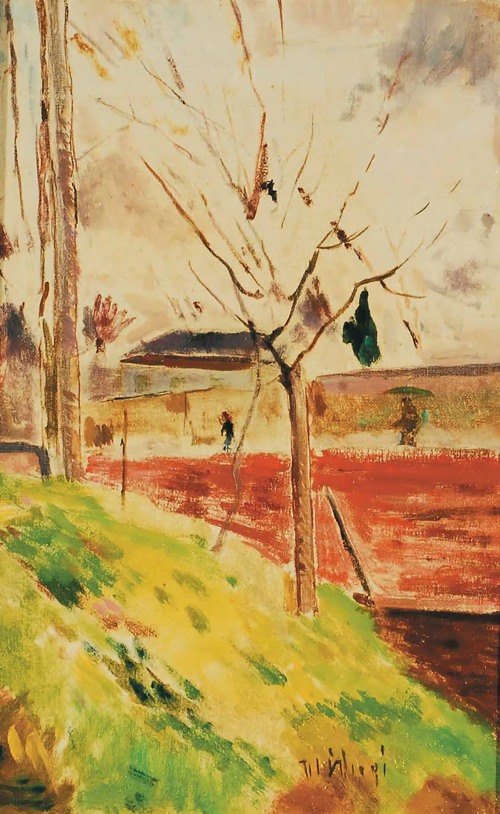
Ulvi Liegi was an Italian painter and printmaker. Part of the Post-macchiaioli movement, he painted various cityscapes of Livorno and depictions of Livornese daily life.
Luigi Levi, who signed his paintings as Ulvi Liegi (an anagram of his real name), was born in Livorno in a wealthy Jewish family. He got initial art education in Livorno, and then he moved to Florence, where he studied in the Academy of Arts under Adolfo Tommasi, Carlo Markò the Younger, and Giuseppe Ciaranfi. While in Florence, he became friends with many artists from the Macchiaioli group, first Telemaco Signorini, and later one of the leaders of the group, Giovanni Fattori. Liegi first exhibited his paintings in 1882, and got positive responses. In the 1880s, he painted in the style close to the Macchiaioli, but later started to paint in a style close to impressionism. In 1886–1888 Liegi visited Paris, where he studied works of impressionists, and London; in 1889, two of his works were exhibited in the World's Fair in Paris.
In 1882, he exhibited at the Mostra of the Società d'incoraggiamento delle Belle Arti of Florence three studies dal vero; in 1884, Liegi sent to Turin three landscapes: Un tramonto lungo il Mugnone; Una giornata grigia nei campì; Un effetto autunnale. In 1887 at Venice, he exhibited: After the rain; Sulla strada del Romito a Florence; Giornata invernale; Sulla sera al Manzollo presso Florence. In 1888, he exhibited at Bologna: Nei campi, dopo the pioggia; Giornata d' inverno, presso San Gervasio, large dal vero study. The same year in London and in 1889 at Paris and at the Promotrice of Florence, he sent: Nel Mugnone; Tramonto; Casolari in montagna; Garda; and Barche peschereccie a Riva ed altri.
From 1890 to 1908, Liegi lived in Florence, but often spent summers in Liguria. In 1908, he moved to Livorno, and stayed there until his death in 1939. He was part of the Post-macchiaioli, a term used for all Tuscan painters active from the 1880’s to around 1920. In 1918, Liegi had his first personal exhibition, in Galleria Mario Galli in Florence. Since 1920, he was the president of the Gruppo Labronico and promoted Livornese art. He died in 1939 in extreme poverty.

